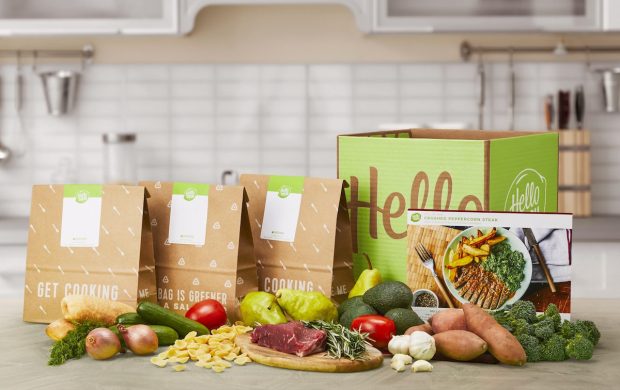HelloFresh Sees Pandemic Cooking Habits Continuing Into the Future

Contagion concerns may have subsided considerably, but many consumers are holding onto their cooking-at-home habits.
In a call with analysts Thursday (April 28) discussing multinational meal kit company HelloFresh’s first-quarter 2022 earnings results, Founder and CEO Dominik Richter argued that at-home cooking is a “very sticky category,” adding that it is “here to stay.”
“Due to more work from home happening than ever now, post-pandemic, and also lots of it’s anticipated to stay for the foreseeable future, [we] think a lot of that behavioral change in structural shift is going to be permanent, and the respective gain in share versus out-of-home is here to stay at much higher levels than pre-pandemic,” he said.
Meal kit purchasing varies significantly across different kinds of consumers, according to data from PYMNTS’ April study, “ConnectedEconomy™ Monthly Report: 3 Ways Consumers Are Dealing With Inflation,” which drew from a March survey of more than 2,800 U.S. adults.
Read more: 6 in 10 Consumers Buying Only the Essentials as Inflation Rises
The study found that 61% of all U.S. consumers are shopping mostly for basic essentials, 10% of the population is living large (spending more freely, with major purchases, including big-ticket items), 23% splurge occasionally on smaller items, and the remaining handful of consumers have not made retail purchases of any kind in the past month other than groceries.
Fifty-five percent of consumers who live large receive a grocery or meal kit subscription on a regular basis, while only 17% of those who splurge occasionally, 29% of those who stick to the essentials and 18% of those who shop just for groceries do the same.
Additionally, many businesses are struggling right now with quickly rising food costs, leaving them to decide how much of the cost to shoulder, reducing their margins, and how much to pass onto the consumer, potentially alienating their customers. HelloFresh, for its part, is making minor modifications to its menus to switch to foods that are not inflating as quickly.
“Obviously through active management, menu planning, and so forth, we can mitigate somewhat the impact also going forward of headwind food price inflation, but we’re not isolated from it completely,” said HelloFresh Group Chief Financial Officer Christian Gaertner.
Richter noted that the company has swapped out “certain ingredients that have been inflating faster than others” in the past as well. He highlighted the example of a couple years ago, when a “zucchini crisis” prompted the company to turn to more readily available vegetables.
Certainly, food prices are on the rise. The latest edition of the U.S. Bureau of Labor Statistics (BLS) Consumer Price Index (CPI) showed that in March, food away from home (i.e., grocery) prices increased 1.5% over February and grew 10% year over year. Plus, food away from home (i.e., restaurant) prices increased 0.3% over February and 6.9% over 2021.
In fact, the matter of inflation and that of the continuation of at-home dining trends may be interconnected, such that the tailwind of the latter could help soften the impact of the headwind of the former. On a call with analysts Thursday, The Hershey Company President and CEO Michele Buck explained this link.
“We’re still seeing a lot of interest in some of the at-home behaviors where people haven’t totally returned to some things like restaurants and some activities, frankly, not as much because of COVID — a little bit more because of some of the price pressure of inflation,” she said.
See more: Inflation Extends the Stay-at-Home Economy’s Effect on Eating Habits